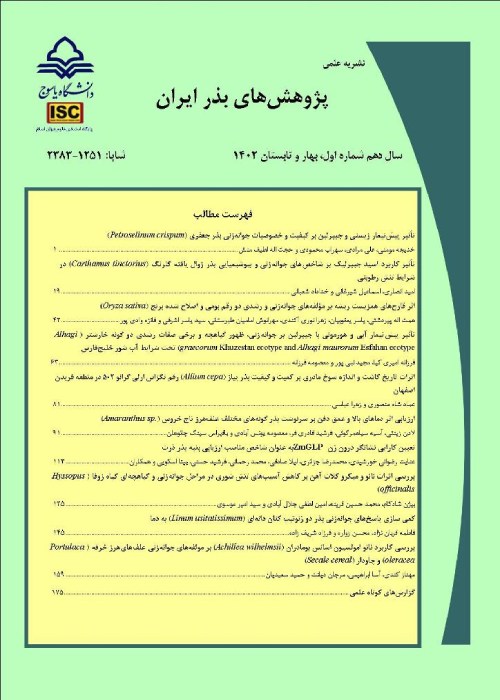Collection of Iranian Melilotus Genetic Resources for Conservation and Utilization
One of approaches to reach sustainable agriculture is to exploit crop diversity, especially in legume species. Since Melilotus spp. (sweet clover) is a forage crop with a suitable yield especially in the marginal lands; therefore collection and characterization of this germplasm is the first effective step for its conservation and utilization in the country. Few accessions of Melilotus genetic resources had been collected in the National Plant Gene Bank of Iran, before this study.
Sweet clover genetic resources were collected all over the country using standard descriptors during two years. Twenty-six characteristics of collection sites were recorded and their descriptive statistics were estimated. The collected materials were planted in an experimental field to identify their life cycle. The seeds of collected germplasms were conserved in mid (2-4 °C)- and long (-20 °C)-terms conditions for further using.
A total of 258 accessions were collected. The geographical altitude of plant origin differed from -11 m in Babolsar to 3090 m in Noor Abad in Lorestan. The materials were mostly collected from non-saline habitats. However, eight accessions were collected from mid to high salinity locations. Taxonomically, M. albus, M. officinalis, and M. indicus were identified with a number of 21, 201 and 36 accessions, respectively. M. dentatus and M. sulcatus, which have been mentioned in the former researches in Iran, were not collected in the recent study.
The collected germplasms from marginal lands (saline, low drainage and low fertility lands) may be tolerant to such marginal lands, therefore they can be exploited for the future research. All M. indicus species were annual; whereas there were annual as well as facultative and obligate biennial accessions in the two other species. Lack of access to M. dentatus and M. sulcatus may be an alarm that they may be threatened species in the country. Collected materials in this study along with the former collection in the Iranian National Plant Gene Bank (80 accessions) have provided high potentials of Melilotus genetic resources for exploitation in the further. Highlights: 1- The three-fold increase in the Melilotus germplasms in the ex-situ conservation system. 2- Alarm for M. dentatus and M. sulcatus which may be threatened with extinction in the country.
- حق عضویت دریافتی صرف حمایت از نشریات عضو و نگهداری، تکمیل و توسعه مگیران میشود.
- پرداخت حق اشتراک و دانلود مقالات اجازه بازنشر آن در سایر رسانههای چاپی و دیجیتال را به کاربر نمیدهد.



